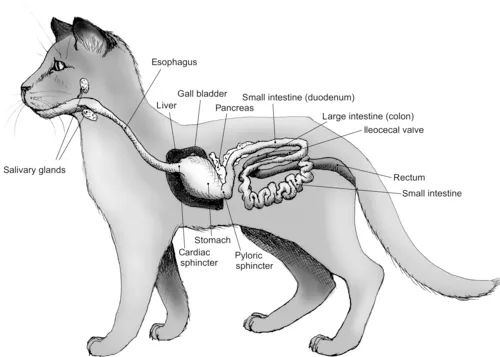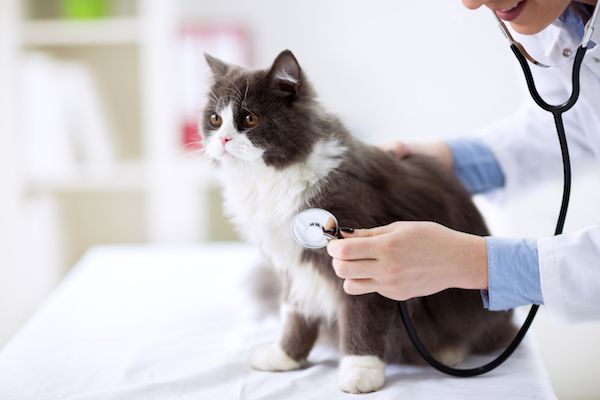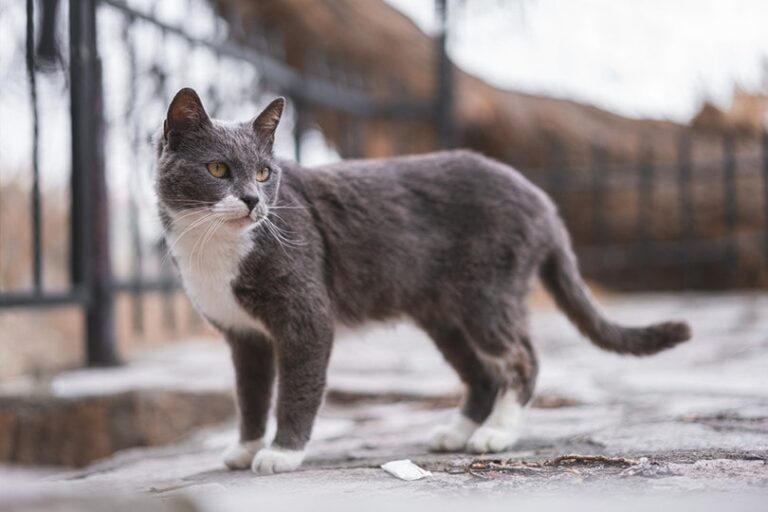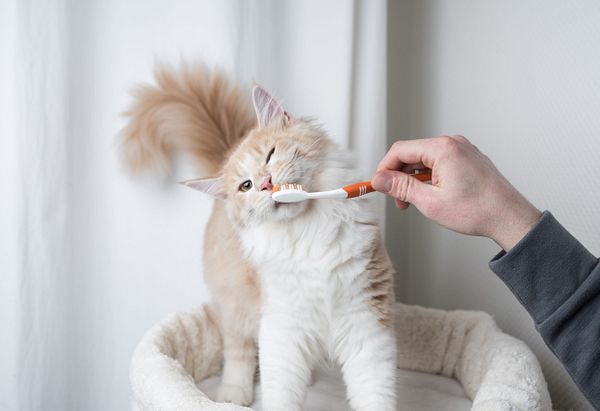Digestive system in cats
The Anatomy of a Cat’s Digestive System
The digestive system of a cat is a remarkable and complex structure that enables the feline to obtain necessary nutrients from food. It is composed of several interconnected organs, each playing a vital role in the overall process. From the moment food enters their mouth to when waste is eliminated, a cat’s digestive system diligently works to break down and absorb the nutrients required for their overall health and well-being.
At the starting point of the digestive system, the mouth plays a pivotal role in preparing food for further digestion. Equipped with sharp teeth, a cat’s mouth is designed to tear and chew food into smaller, more manageable pieces. Additionally, saliva, secreted by specialized glands in their mouth, aids in the initial breakdown of food and the formation of a bolus, which can be easily transported to the stomach through the esophagus. This initial step is crucial in ensuring efficient digestion and nutrient absorption in the subsequent stages.
The Mouth: The Starting Point of Digestion
The mouth serves as the starting point of digestion in the digestive system of a cat. It is through this important organ that the cat begins the process of breaking down food into smaller, more manageable pieces. The main tool utilized by the mouth for this purpose is the teeth. With their sharp canines and molars, the cat is able to chew and grind the food, effectively reducing its size and preparing it for further digestion. Additionally, the mouth contains the tongue, which aids in maneuvering the food within the oral cavity and initiating the process of swallowing.
Another crucial component found within the mouth is saliva. This clear and watery fluid plays a significant role in the initial steps of digestion. Produced by the salivary glands, saliva is a mixture of water, mucus, and enzymes. Its primary function is to moisten the food and facilitate its movement through the digestive system. Moreover, saliva contains digestive enzymes, such as amylase, which begin the breakdown of carbohydrates present in the food. These enzymes help convert complex carbohydrates into simpler sugars, making them easier to digest and absorb in the subsequent stages of digestion.
The Role of Saliva in the Digestive Process
Saliva, the watery substance produced by the salivary glands in the mouth, plays a crucial role in the digestive process. Although often overlooked, saliva actually serves several important functions in breaking down food and preparing it for further digestion.
First and foremost, saliva moistens the food as it enters the mouth, making it easier to chew and swallow. This initial step of moistening is essential in the process of mastication, or chewing, as it helps to soften food particles and create a bolus that can be easily pushed down the esophagus. Additionally, saliva contains enzymes, such as amylase, that begin the process of chemical digestion by breaking down carbohydrates into simpler sugars. This enzymatic action starts the breakdown of food even before it reaches the stomach, allowing for more efficient digestion and nutrient absorption later on.
The Esophagus: Transporting Food to the Stomach
The esophagus, a muscular tube connecting the throat to the stomach, plays a vital role in the digestive process of cats. As food is swallowed, it travels down the esophagus through a series of coordinated muscle contractions, known as peristalsis. These rhythmic contractions ensure the smooth transport of food from the mouth to the stomach. The esophagus is lined with a protective layer of mucus, which helps to lubricate the passage and facilitate the movement of food. This protective lining also shields the esophagus from any potential damage caused by the acidic substances in the stomach.
One remarkable aspect of the esophagus is its ability to prevent food from flowing back into the mouth. This is achieved by the presence of a muscular ring called the lower esophageal sphincter. Located at the junction of the esophagus and the stomach, this sphincter tightly seals off the opening, preventing any backward flow of stomach acid and partially digested food. However, in some instances, this mechanism may fail, leading to a condition known as gastroesophageal reflux in which stomach acid refluxes into the esophagus. This can cause discomfort and irritation, commonly referred to as heartburn or acid reflux.
The Stomach: Breaking Down Food with Gastric Juices
The stomach, a crucial organ in the digestive system, plays a vital role in breaking down food with the help of gastric juices. Upon entering the stomach, food is mixed with these powerful gastric juices, which are primarily composed of enzymes and hydrochloric acid. Enzymes, such as pepsin, work to break down proteins into smaller molecules known as peptides. Meanwhile, hydrochloric acid helps to create an acidic environment, necessary for the activation of pepsin and the breakdown of food.
The muscular walls of the stomach contract and relax, causing the food and gastric juices to mix thoroughly. This process, known as churning, helps to break the food down into even smaller particles, forming a semi-solid mixture called chyme. Chyme is essential for the efficient absorption of nutrients further along the digestive tract. While the stomach primarily breaks down proteins, it also helps to break down fats and carbohydrates to a lesser extent. During this extensive process of digestion, the stomach acts as a powerful organ, working diligently to ensure that food is broken down into nutrient-rich components that can be absorbed by the body.
The Small Intestine: Absorbing Nutrients into the Body
The small intestine, a crucial part of a cat’s digestive system, plays a vital role in absorbing nutrients into the body. This long, coiled tube is located between the stomach and the large intestine, and it is where the majority of digestion and nutrient absorption take place.
Within the small intestine, there are specialized structures called villi and microvilli. These finger-like projections increase the surface area of the intestinal wall, allowing for more efficient absorption of nutrients. As food passes through the small intestine, the lining of the intestinal wall releases enzymes and contains small glands that produce additional digestive juices. These enzymes break down the complex nutrients into simpler forms that can be easily absorbed by the body. The absorbed nutrients then enter the bloodstream and are transported throughout the cat’s body, providing essential energy and nourishment.
The Role of Enzymes in Digestion
Digestion is a complex process that involves the breaking down of food into smaller components that can be absorbed by the body. Enzymes play a vital role in this process by speeding up the chemical reactions that occur during digestion. Without enzymes, the body would struggle to break down the various macronutrients present in food, such as carbohydrates, proteins, and fats.
One of the key enzymes involved in digestion is amylase, which helps break down carbohydrates into simple sugars. Amylase is produced in the salivary glands and begins its work in the mouth, where it starts breaking down starches into smaller glucose molecules. This initial step is crucial as it helps facilitate the subsequent digestion of carbohydrates in the small intestine.
Proteases are another group of enzymes that are responsible for breaking down proteins into amino acids. These enzymes are produced in the stomach and small intestine. In the stomach, pepsinogen is converted into its active form, pepsin, by the acidic environment. Pepsin then goes on to break down large protein molecules into smaller peptides. In the small intestine, other proteases continue the process of breaking down these peptides into individual amino acids, which can be absorbed by the body and used for various functions, such as building new proteins.
Lipases, on the other hand, are enzymes that aid in the digestion of fats. These enzymes are primarily produced in the pancreas and are released into the small intestine to help break down dietary fats into fatty acids and glycerol. This breakdown is crucial as it allows for the absorption of fats into the body, where they can be used for energy and other essential functions.
Overall, enzymes play a critical role in the digestion process by accelerating the breakdown of food into smaller, more easily absorbable components. Without these enzymes, the body would struggle to efficiently break down and extract nutrients from the food we consume. The diverse and specific functions of enzymes ensure that each macronutrient is properly digested and utilized by the body for optimal health and function.
The Large Intestine: Absorbing Water and Forming Feces
The large intestine, also known as the colon, plays a crucial role in the cat’s digestive system. After passing through the small intestine, undigested food enters the large intestine. Here, one of the main functions of the large intestine is to absorb water from the remaining undigested food. This process is essential to maintain the body’s water balance and prevent dehydration. As the undigested food moves through the large intestine, water is extracted, and the remaining waste material becomes more solid.
In addition to absorbing water, the large intestine is responsible for forming feces. As the waste material travels through the colon, it undergoes a process called compaction. During compaction, the colon contracts, squeezing the waste material and helping to shape it into feces. This process also allows for the absorption of some remaining nutrients and electrolytes. Once the waste material has been adequately compacted and the necessary water has been absorbed, the feces are stored in the rectum until the cat is ready to eliminate them.
What is the function of the large intestine?
The large intestine is responsible for absorbing water and forming feces.
What is the anatomy of a cat’s digestive system?
The cat’s digestive system consists of the mouth, esophagus, stomach, small intestine, and large intestine.
What is the role of saliva in the digestive process?
Saliva helps break down food particles and lubricates the food for easier swallowing.
How does the esophagus contribute to digestion?
The esophagus transports food from the mouth to the stomach through muscle contractions known as peristalsis.
How does the stomach break down food?
The stomach uses gastric juices, including hydrochloric acid and enzymes, to break down food into smaller particles.
What is the function of the small intestine?
The small intestine is responsible for absorbing nutrients from digested food into the body.
What is the role of enzymes in digestion?
Enzymes are catalysts that help break down large molecules into smaller, more easily absorbable molecules during digestion.
How does the large intestine absorb water?
The large intestine absorbs water from undigested food, helping to solidify waste material and prevent dehydration.
How does the large intestine form feces?
As water is absorbed from undigested food in the large intestine, the remaining waste material becomes more solid, forming feces.







